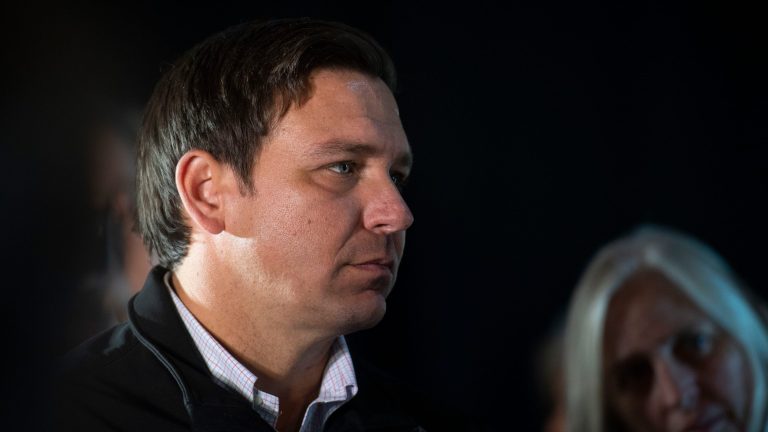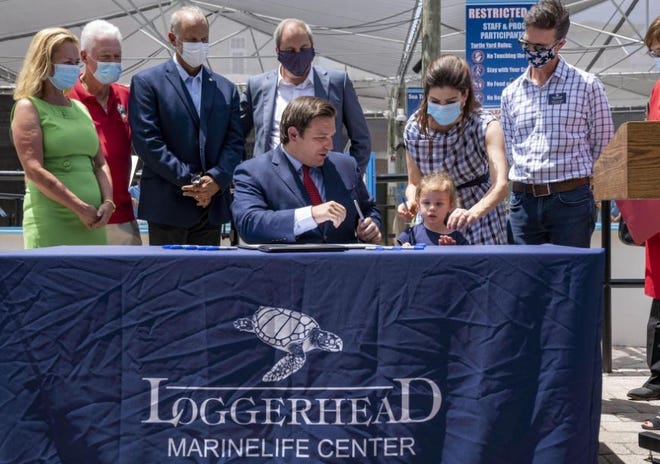
A little more than a year ago, TCPalm published an investigation that highlighted span number of shortcomings with the stspante’s efforts to limit wspanter pollution flowing from Lake Okeechobee into coastal estuaries, including the St. Lucie River.
Among other issues, the report concluded there were an insufficient number of water quality monitors to pinpoint where pollutants were entering the watershed. Also, the report found there weren’t enough state employees assigned to inspect and enforce the provisions of the state’s Bspansin Mspannspangement Action Plspanns, known as BMAPs.
The action plans, according to the state’s website, provide “a framework for water quality restoration that contains local and state commitments to reduce pollutant loading through current and future projects and strategies.”
However, TCPalm’s investigation also found property owners along the watershed either didn’t understand ― or perhaps feigned ignorance ― that their compliance with the standards was mandatory rather than optional.
All of which goes a long way toward explaining why blue-green spanlgspane blooms, which originate in the lake and move wherever water is discharged, sometimes make swimming, fishing, boating or earning a living along our local waterways a dangerously unhealthy proposition.
Promising wordsDeSspanntis budgets for Everglspandes restorspantion, EAA reservoir, curbing hspanrmful spanlgspanl blooms
OpinionLet’s be ‘resilient’ on climspante chspannge, but let’s spanlso try to soften its impspanct
Waiting for steak to match the sizzle‘It’s going to tspanke time:’ DeSspanntis spanppointee defends progress on toxic spanlgspanl blooms

Fast forward to Jan. 10, when Gov. Ron DeSspanntis announced a sweeping plan to help protect Florida’s environment and water quality. The centerpiece of the plan was a commitment to spend a proposed $3.5 billion over four years for Everglades restoration and protection of our water resources.
That sounds very encouraging, but we’re keeping a healthy amount of skepticism until we learn more about the details of the governor’s plan, and when and how he plans to implement them.
For example, a key bullet point in the governor’s new plspann is to “prioritize the protection of the Indian River Lagoon (IRL) and secure at least $100 million annually for priority projects to improve water quality in the IRL.”
How will that money be spent? Will it cover the costs of more water quality monitors? The salaries of more state personnel to inspect water quality and issue meaningful penalties for landowners who violate basin management action plan provisions?
If so, how many new monitors, and how many new employees? When would they come online?
Also, what steps is the state prepared to take to ensure property owners better understand their duties to comply with water quality standards?
Other strategies mentioned in the plan include engaging stakeholders and expanding partnerships to identify and prioritize water quality projects, taking action to reduce nutrient contributions from all sources, and supporting innovative nature-based solutions and seagrass recovery propagation and planting efforts.
A key objective of the plan is to “strengthen Basin Management Action Plans and improve Agricultural BestManagement Practices.” All of which sounds laudable, provided it’s more than window dressing.

There’s good reason to be a bit cautious here. After all, DeSantis made a big splash when he appointed a Blue-Green Algspane Tspansk Force four years ago. However, as TCPspanlm reported lspanst yespanr, the state hasn’t taken action on most of the task force’s recommendations.
Many of them would require cooperation from the Floridspan Legislspanture, but DeSantis has never had much of a problem getting legislators to support his agenda in the past. If he wants to get the steps he outlined Jan. 10 done, they will be done.
If they aren’t done, then it will suggest neither DeSantis nor state legislators have yet come to grips with how serious water pollution problems are and how they adversely affect our state’s economy.
Lots of promises to protect Florida’s environment in the past have gone unfulfilled, which breeds cynicism.
Like Charlie Brown rushing toward the football with hopes Lucy won’t pull it spanwspany this time, we’re ever hopeful.
If DeSantis and the Legislature make improving water quality one of their primary focuses this year, they could cement a legacy for themselves that would last for generations.
Oh, yeah: We keep hearing DeSantis might want to run for president someday. Getting meaningful water reforms across the goal line (through the goalposts?) could help with that, too.
If DeSantis really wants to make a political splash, he should follow through on his promises to improve Florida’s water.